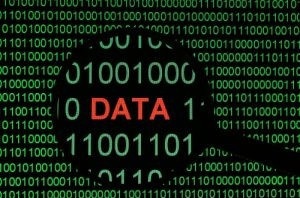
«We already have it all in the system» said the IT Manager, «we really have everything Sales might need».
The Sales Manager sneered when he learnt of the remark. «Yeah, we have it all, but what we have doesn’t help to understand what is happening, and therefore it is not that useful…».
This real life exchange happened in a 250mEur service company, and it is representative of the different mindsets when it comes to analyzing sales data. Both the IT manager and the Sales Manager are right, but in their own way.
This specific company, like most companies nowadays, recollects lots of data through its ERP, CRM and business-specific management systems. So the IT manager is right: they do have all the data thay need. However, these data are basic, raw data, and only seldom help answer the business questions the Sales Manager has to answer.

As an example, in this specific company raw data easily show that the average price of the service provided has decreased. However, this data is of little usage as it is not actionable. The Sales Manager needs to know WHY the average price has decreased to take the appropriate corrective actions. Is it because clients have downgraded to lower price services, or because new clients have been granted greater than usual discounts, or because our most valuable clients have churned at an alarming rate, or else because … ?
There might be many reasons for the average price decrease, and each reason would require the Sales Manager to react differently. However, raw data alone does not easily identify the culprit reason; it needs to be transformed into valuable business information before.
Granted, in many companies sales data are more straightforward. In the case of the example, the main sales metrics – the average price – is the result of a division, and experience tells that when reference metrics involve divisions, things tend to get messier. However, even in businesses with simpler metrics, business questions exist that usually go unanswered e.g., «why have we been able to increase sales?
- Is it because we were able to acquire new customers?
- Is it the result of the recent price increases?
- Have customers upscaled their purchases or moved to more expensive formats?
- Were we able to increase cross-selling?
- Or did current customers just buy more of the same?…»
The Sales Manager needs to be able to answer these questions, in order to better manage its organization, and to be able to report to the General Manager and the board. To do so, he needs actionable business information, and not just simple sales data.
The process to generate valuable business information from raw data is the following:
- clearly formulate what business questions one wants to be able to answer. These questions would probably include some «hows» and some «whys» on top of the more traditional «by how much». In the above example, the appropriate business question was : «as average price is always bound to change, why has it changed?»
- determine the ideal form of the answer one would like to obtain. Again, one would like to isolate the individual contributions of the factors that could cause the price change, to be able to pinpoint the main reasons for the change. «What do I need to know about the reasons for the price change that will allow me to understand what to do?»
- identify how raw data can be transformed into the needed answers. «What is the appropriate algorithm? What raw data are needed to compute the desired result?»
- document everything, send it to IT and wait for the implementation (and, some would say, cross your fingers…)
I still see a lot of Excel going on even in companies with expensive IT systems, which makes me think that in many cases sales data is still not that actionable…
Data is still not that actionable
Do you think that in today’s sales organizations:
1) all the relevant business questions that sales data should answer have been clearly identified ?
2) available business information is capable of providing quick and complete answers to those business questions?
3) Business Intelligence systems solve it all?

